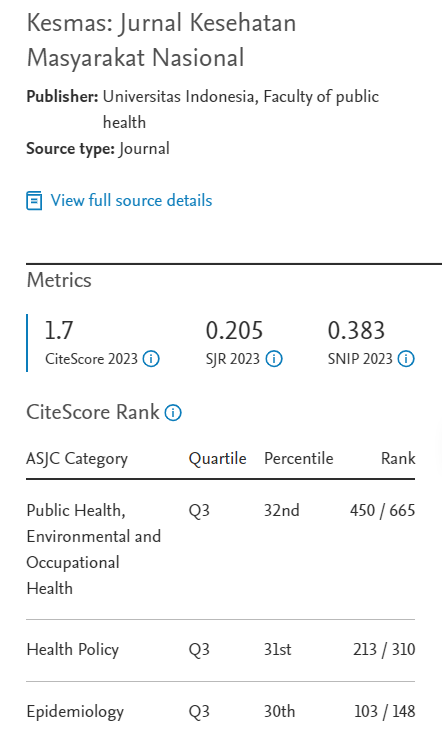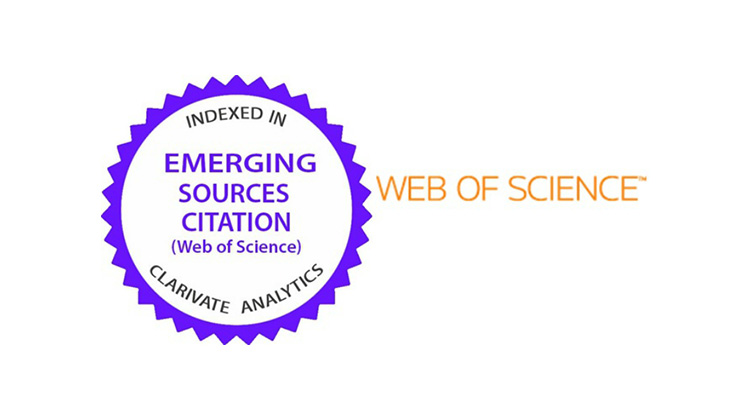Abstract
Preeclampsia is a leading cause of maternal morbidity and mortality worldwide, with early detection being critical for reducing adverse outcomes. This study aimed to develop a machine learning model for predicting the risk of preeclampsia using readily available maternal characteristics such as body mass index, mean arterial pressure, and clinical history of hypertension or diabetes mellitus. Secondary data from 2,250 pregnancies were analyzed, addressing challenges such as missing data and class imbalance through preprocessing. Various algorithms, including support vector machines, random forest, and logistic regression, were evaluated. Herein, a support vector machines model with threshold adjustment showed the best performance, with a sensitivity of 67.5%, specificity of 57.23%, and an area under the curve of 0.68. These findings indicated the promising potential of scalable and interpretable prediction models for enhancing preeclampsia screening in primary health care settings. However, further refinement and validation of the proposed model are required for broader clinical integration to improve maternal and neonatal health outcomes.
References
1. Brown MA, Magee LA, Kenny LC, et al. Hypertensive disorders of pregnancy: ISSHP classification, diagnosis, and management: Recommendations for international practice. Hypertension. 2018; 72 (1): 24-43. DOI: 10.1161/HYPERTENSIONAHA.117.10803
2. Boushra M, Natesan SM, Koyfman A, et al. High risk and low prevalence diseases: Eclampsia. Am J Emerg Med. 2022; 58: 223-228. DOI: 10.1016/j.ajem.2022.06.004.
3. Teka H, Yemane A, Abraha HE, et al. Clinical presentation, maternal-fetal, and neonatal outcomes of early-onset versus late onset preeclampsia-eclampsia syndrome in a teaching hospital in a low-resource setting: A retrospective cohort study. PLoS ONE. 2023; 18 (2): e0281952. DOI: 10.1371/journal.pone.0281952.
4. Goel A, Maski MR, Bajracharya S, et al. Epidemiology and mechanisms of de novo and persistent hypertension in the postpartum period. Circulation. 2015; 132 (18): 1726–1733. DOI: 10.1161/CIRCULATIONAHA.115.015721.
5. Perry H, Khalil A, Thilaganathan B. Preeclampsia and the cardiovascular system: An update. Trends Cardiovasc Med. 2018; 28 (8): 505-513. DOI: 10.1016/j.tcm.2018.04.009.
6. Ives CW, Sinkey R, Rajapreyar I, et al. Preeclampsia—pathophysiology and clinical presentations: JACC state-of-the-art review. J Am Coll Cardiol. 2020; 76 (14): 1690-1702. DOI: 10.1016/j.jacc.2020.08.014.
7. Garovic VD, Dechend R, Easterling T, et al. Hypertension in pregnancy: Diagnosis, blood pressure goals, and pharmacotherapy: A scientific statement from the American Heart Association. Hypertension. 2022; 79 (2): e21-e41. DOI: 10.1161/HYP.0000000000000208.
8. Maric I, Tsur A, Aghaeepour N, et al. Early prediction of preeclampsia via machine learning. Am J Obstet Gynecol MFM. 2020; 2 (2): 100100. DOI: 10.1016/j.ajogmf.2020.100100.
9. Gathiram P, Moodley J. Pre-eclampsia: Its pathogenesis and pathophysiolgy. Cardiovasc J Afr. 2016; 27 (2): 71-78. DOI: 10.5830/CVJA-2016-009.
10. Benny PA, Alakwaa FM, Schlueter RJ, et al. A review of omics approaches to study preeclampsia. Placenta. 2020; 92: 17-27. DOI: 10.1016/j.placenta.2020.01.008.
11. Wu P, Van den Berg C, Alfirevic Z, et al. Early pregnancy biomarkers in pre-eclampsia: A systematic Review and meta-analysis. Int J Mol Sci. 2015; 16 (9): 23035-23056. DOI: 10.3390/ijms160923035.
12. Townsend R, Khalil A, Premakumar Y, et al. Prediction of pre-eclampsia: Review of reviews. Ultrasound Obstetr Gynecol. 2019; 54 (1): 16-27. DOI: 10.1002/uog.20117.
13. Al-Rubaie ZT, Hudson HM, Jenkins G, et al. Prediction of preeclampsia in nulliparous women using routinely collected maternal characteristics: A model development and validation study. BMC Pregnancy Childbirth. 2020; 20: 23. DOI: 10.1186/s12884-019-2712-x.
14. Kusuma RA, Nurdiati DS, Wilopo SA. Alternatives of risk prediction models for preeclampsia in a low middle-income setting. Open Access Maced J Med Sci. 2022; 10 (B): 1745-1750. DOI: 10.3889/oamjms.2022.9030.
15. Tiruneh SA, Moran LJ, Callander EJ, et al. Externally validated prediction models for preeclampsia: Systematic review and meta-analysis. Ultrasound Obstet Gynecol. 2024; 63 (5): 592-604. DOI: 10.1002/uog.27490.
16. Ranjbar A, Montazeri F, Ghamsari SR, et al. Machine learning models for predicting preeclampsia: A systematic review. BMC Pregnancy Childbirth. 2024; 24: 6. DOI: 10.1186/s12884-023-06220-1.
17. Bzdok D, Altman N, Krzywinski M. Statistics versus machine learning. Nat methods. 2018; 15: 233-234. DOI: 10.1038/nmeth.4642.
18. Sufriyana H, Wu YW, Su EC. Artificial intelligence-assisted prediction of preeclampsia: Development and external validation of a nationwide health insurance dataset of the BPJS Kesehatan in Indonesia. EbioMedicine. 2020; 54: 102710. DOI: 10.1016/j.ebiom.2020.102710.
19. Savitri AI, Zuithoff P, Browne JL, et al. Does pre-pregnancy BMI determine blood pressure during pregnancy? A prospective cohort study. BMJ Open. 2016; 6: e011626. DOI: 10.1136/bmjopen-2016-011626.
20. Mocking M, Savitri AI, Cuno SPM, et al. Does body mass index early in pregnancy influence the risk of maternal anaemia? An observational study in Indonesian and Ghanaian women. BMC Public Health. 2018; 18: 873. DOI: 10.1186/s12889-018-5704-2.
21. Kelsey JL, Whittemore AS, Evans AS, et.al. Methods of sampling and estimation of sample size. In: Kelsey JL, Whittemore AS, Evans AS, et al., eds., Methods in Observational Epidemiology. New York: Oxford University Press; 1996.
22. Balki I, Amirabadi A, Levman J, et al. Sample-size determination methodologies for machine learning in medical imaging research: A systematic review. Can Assoc Radiol J. 2019; 70 (4): 344–353. DOI: 10.1016/j.carj.2019.06.002.
23. Riley RD, Ensor J, Snell KI, et al. Calculating the sample size required for developing a clinical prediction model. BMJ. 2020; 368. DOI: 10.1136/bmj.m441.
24. Wagner R, Grimm MS. Empirical validation of the 10-times rule for SEM. In: Radomir L, Ciornea R, Wang H, et al., eds. State of the Art in Partial Least Squares Structural Equation Modeling (PLS-SEM). Berlin: Springer; 2023.
25. Little RJA, Rubin DB. Statistical analysis with missing data. 3rd ed. New York: Wiley; 2019.
26. Hassanzad M, Hajian-Tilaki K. Methods of determining optimal cut-point of diagnostic biomarkers with application of clinical data in ROC analysis: an update review. BMC Med Res Methodol. 2024; 24: 84. DOI: 10.1186/s12874-024-02198-2.
27. Nishimura E, Rahman MO, Ota E, et al. Role of maternal and child health handbook on improving maternal, newborn, and child health outcomes: A systematic review and meta-analysis. Children. 2023; 10 (3): 435. DOI: 10.3390/children10030435.
28. Osaki K, Hattori T, Toda A, et al. Maternal and child health handbook use for maternal and child care: A cluster randomized controlled study in rural Java, Indonesia. J Public Health (Oxf). 2019; 41: 170-182. DOI: 10.1093/pubmed/fdx175.
29. Fernández A, Garcia S, Herrera F, et al. SMOTE for learning from imbalanced data: Progress and challenges, marking the 15-year anniversary. J Artif Intell Res. 2018; 61: 863-905. DOI: 10.1613/jair.1.11192.
30. Awor S, Abola B, Byanyima R, et al. Prediction of pre-eclampsia at St. Mary's hospital lacor, a low-resource setting in northern Uganda, a prospective cohort study. BMC Pregnancy Childbirth. 2023; 23: 101. DOI: 10.1186/s12884-023-05420-z.
31. Ranjbar A, Taeidi E, Mehrnoush V, et al. Machine learning models for predicting pre-eclampsia: A systematic review protocol. BMJ Open. 2023; 13: e074705. DOI: 10.1136/bmjopen-2023-074705.
32. Wynants L, van Smeden M, McLernon DJ, et al. Three myths about risk thresholds for prediction models. BMC Med. 2019; 17: 192. DOI: 10.1186/s12916-019-1425-3.
33. Zheng D, Hao X, Khan M, et al. Comparison of machine learning and logistic regression as predictive models for adverse maternal and neonatal outcomes of preeclampsia: A retrospective study. Front Cardiovasc Med. 2022; 9: 959649. DOI: 10.3389/fcvm.2022.959649.
34. Aljameel SS, Alzahranin M, Almusharraf R, et al. Prediction of preeclampsia using machine learning and deep learning models: A review. Big Data Cogn. Comput. 2023; 7 (1): 32. DOI: 10.3390/bdcc7010032.
35. Jhee JH, Lee S, Park Y, et al. Prediction model development of late-onset preeclampsia using machine learning-based methods. PLoS ONE. 2019; 14 (8): e0221202. DOI: 10.1371/journal.pone.0221202.
36. Parrales-Bravo F, Caicedo-Quiroz R, Tolozano-Benitez E, et al. OUCH: Oversampling and Undersampling Cannot Help Improve Accuracy in Our Bayesian Classifiers That Predict Preeclampsia. Mathematics. 2024; 12: 3351. DOI: 10.3390/math12213351.
Recommended Citation
Amelia D , Adisasmita A , Siregar KN ,
et al.
Machine Learning for Preeclampsia Prediction: Enhancing Screening in Primary Health Care.
Kesmas.
2025;
20(2):
147-156
DOI: 10.7454/kesmas.v20i2.2243
Available at:
https://scholarhub.ui.ac.id/kesmas/vol20/iss2/8








